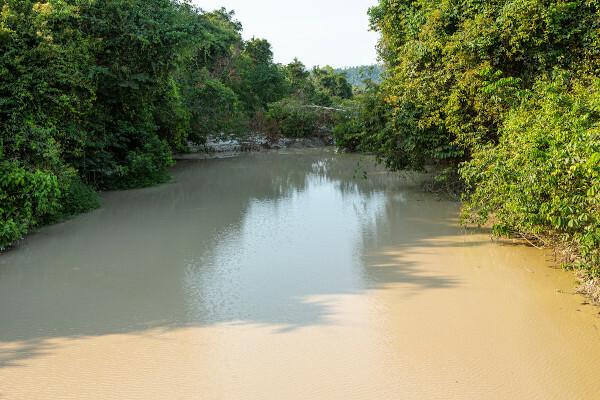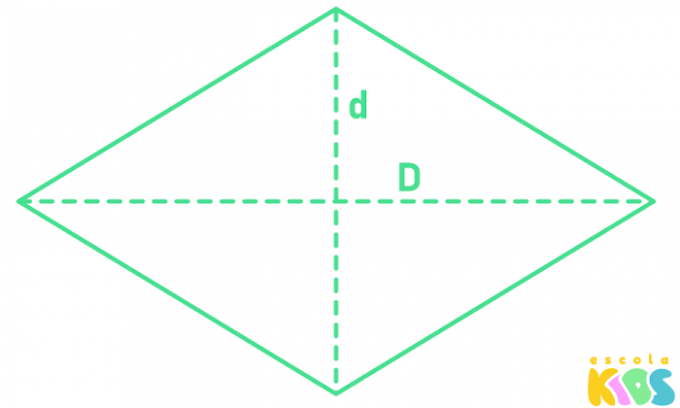O mining It is an extraction activity. resources minerals, such as gold, from soils or watercourses on a limited scale and individually or by cooperatives, using manual techniques or even machinery such as backhoes and dredgers.
Despite its economic importance, mining promotes transformations in the landscape and causes a series of damage to the environment, such as deforestation and contamination of river waters with elements toxic. In addition, the growth of illegal mining in Brazil, mainly in the Amazon, poses risks to traditional communities, such as indigenous and riverside peoples.
Read too:Agribusiness — an economic activity that also generates environmental and social impacts
Topics of this article
- 1 - Summary about mining
- 2 - What are the goals of mining?
- 3 - How does mining work?
-
4 - Consequences of mining
- → Environmental impacts caused by mining
- 5 - Mining in Brazil
- 6 - Differences between legal and illegal mining
- 7 - Difference between prospecting and mining
- 8 - History of mining
Summary about the mining
Mining is an economic activity that aims to obtain mineral resources, such as gold, for commercialization.
It can be carried out individually or in groups using manual techniques or with the aid of equipment such as tractors, hydraulic excavators and dredgers.
It differs from mining in that it is carried out in an area limited in size by legislation and in the comparatively smaller volume of ores extracted.
Mining that has not obtained authorization from the National Mining Association (ANM) and/or that does not follows the rules laid down by that body, which prohibits mining in Indigenous Lands and in areas larger than 50 acre.
Mining alters the local dynamics where it is installed and promotes transformations in the natural landscape, which causes impacts on the environment.
The environmental impacts caused by mining are: deforestation, silting up of rivers and contamination of soils and waters with substances such as mercury, an input used in mining that can cause serious damage to health human.
The mining area has doubled in Brazil in the last decade, especially in the states of the North region and in Mato Grosso.
Illegal mining has also advanced in the national territory, and has become a major problem for communities and traditional peoples in Brazil, such as indigenous and riverine people.
Do not stop now... There's more after the publicity ;)
What are the objectives of the mine?
The activity carried out in the mining areas can be classified as a kind of extractivism mineral which is achieved through specific techniques that differentiate it from mining even from a legal perspective.
Therefore, the main objective of mining is to obtaining minerals with commercial value for their subsequent sale, which, in this case, happens right after the extraction.
Gold is the main type of mineral extracted through mining. However, Brazilian legislation authorizes the extraction of a dozen minerals classified as mineable, including diamond, quartz, mica and feldspar.
How does mining take place?
Garimpagem, or garimpagem, as the activity developed in these areas is called, is established in areas where there is the presence of metallic or non-metallic minerals that have commercial value.
These minerals are commonly found in lands with fluvial (alluvial), eluvial (fragments of minerals that remained after weathering and erosion) or in secondary deposits, as defined by the National Water Agency (A-N-A). Therefore, It is common to set up mines close to watercourses.
The mining activity is described as being the mining done manually with the aid of few instruments and utensils, one of them being the pan. Mining would be carried out on a small scale and individually or through cooperatives. This definition is present in the Garimpeiro Statute (law 11.685 of June 2, 2008).

While there are garimpeiros who develop the extraction in the way described above, technological advancement has allowed the implementation of machinery, such as hydraulic backhoe loaders, bulldozers, wheel loaders and dredgers, for mining, which increases the speed of work and the explored area.
The machines are used to revolve and suck the material from the bottom of the rivers, which goes through a filtering process to separate the mineral.|1| After that, the water is returned to the bed, a process that can generate many negative impacts on the environment.
Consequences of mining
The mining causes a series of transformations in the spatial and socioeconomic dynamics of the areas where, which can directly affect the way of life of populations and communities, notably traditional peoples, such as indigenous peoples, who live and depend on the natural resources for their subsistence.
Disputes over areas and land invasions are registered in many regions where mining advances, especially when the activity takes place illegally, such as exploration in Brazilian Indigenous Lands.
In addition, mining is responsible for a series of actions that promote the degradation of nature. These interventions make imbalance of ecosystems and direct threat to maintenance of biodiversity local. Likewise, damage to the environment can result in health problems for humans.
A natural landscape is profoundly altered, which can also compromise the physical structure of the relief and the integrity of the other elements, resulting in damage to the environment, as we will see below.
→ Environmental impacts caused by mining

We list below some of the environmental impacts caused by mining:
logging;
silting up of rivers and changes to your bed;
water turbidity;
soil pollution;
contamination of soil and water by toxic substances such as mercury.
◦ mercury contamination
A mercury contamination é one of the most harmful consequences for the environment and human health resulting froms of mining activities. O Mercury It is a highly toxic heavy metal used in mining to form amalgams and obtain the gold present in the water. After extraction, the water and the residues present in it are dumped back, which leads to the contamination of water bodies and soils by mercury.
Mercury affects the fauna of rivers and the flora present on their banks. The consumption of fish that live in contaminated waters or even the ingestion of these waters leads to the contamination of human beings, causing severe health problems, such as cardiovascular diseases, cancer, congenital malformation and the development of neurological problems resulting from the way this heavy metal acts in the nervous system.|2|
mining in Brazil
The mine is a activity that is part of the economic history of the Brazil, mingling also with the interiorization of the occupation of the national territory in past centuries. Currently, growth has been observed in the area destined for this practice in the country, especially in the states of North region, as For, amazon It is roraima, and also in Mato Grosso.
Data from MapBiomas show that the mining area practically doubled in the country between 2010 and 2021, going from 99 thousand hectares to 196 thousand hectares in that period of time.|3| An alarming aspect of this growth is that it has occurred mainly in regions of indigenous lands,|4| which causes serious impacts on the lives of indigenous populations for reasons ranging from environmental degradation in protected areas to direct confrontations.
Representing at least a tenth of the mining activity in the country, illegal mining is one of the main factors that have harmed both the environment and traditional communities, such as indigenous and riverine people, since it advances on biomes such as amazon.
The contamination of the Tapajós River, near Alter do Chão (Pará), is one of the consequences of illegal mining for the Brazilian environment. The Yanomami, Mundukuru and Kayapó Indigenous Lands can be mentioned as regions where this activity is advancing, harming the lives of indigenous communities.
See too:Demarcation of indigenous lands in Brazil — why is it done?
Differences between legal and illegal mining
Legal mining: is the mining activity carried out in accordance with the provisions of the legislation, known as the Garimpeiro Statute, and upon request of the mining application garimpeira (permission for mineral extraction through gold mining) to the National Mining Agency (ANM), responsible for regulating and supervising this practice in the country. Brazil.
Illegal mining: according to ANM determinations, mining activity is considered illegal when practiced inside Indigenous Lands or in areas with surface larger than 50 hectares (0.5 km²), in the case of individual applications, or 1000 hectares (10 km²), in the case of cooperatives of prospectors.
Difference between prospecting and mining
Garimpeiro and mining are extractive activities that differ in terms of the scale of action and, mainly, the characteristic processes of each one of them.
Mining: practiced in a limited area, and extraction takes place in small volumes. After obtaining the mineral, such as gold, it is immediately sold directly to the consumer or interested company.
Mining: corresponds to the entire process of research, exploration, extraction and processing of mineral resources extracted from the soil. It is, in addition to an economic activity, an industry.
mining history
The extraction of valuable metals, mainly gold, from water and soil using simple manual techniques is part of human historyand since at least the period of dominance of the Roman Empire at the European continent, also passing through pre-Columbian peoples from the South America.
In Brazilian territory, the history of mining began during the Brazil Colonywith the interiorization of the occupation and the search for precious stones, which intensified from the 17th century through expeditions known as bandeiras. Among the main areas explored in the period were the current states of Mato Grosso, Goias It is Minas Gerais, where gold was finally found, in 1695.
Exploration fronts also continued towards the North region of Brazil, which, in the second half of the 20th century, became the main mining area in the national territory. This happened mainly from the 1980s, with the installation of the Serra Pelada mine, in the state of Pará.
Serra Pelada was the largest open-air mining area in the world. Tens of thousands of men moved to the region in order to obtain gold, and estimates indicate that withdrawals reached 42 tons during the 1980s. Factors such as working in precarious conditions and the depletion of deposits led to the suspension of activities in 1992.
As we saw, mining today advances over the Center-North and North of Brazil, being a cause for concern due to the negative impacts on the environment and damage to traditional communities.
Grades
|1| ESSAY. Videos made by prospectors show the operation of the dredgers and the gold extracted on the Madeira River, in AM. G1, 25 Nov. 2021. Available here.
|2| THE GLOBE. Yanomami: how mercury contamination, resulting from illegal mining, affects health. O Globo newspaper, 24 Jan. 2023. Available here.
|3| It is |4| WATANABE, Philippe. Garimpo grows in Brazil and more than 91% of its area is in the Amazon. Folha de S.Paulo, 26 Sept. 2022. Available here.
By Paloma Guitarrara
Geography Teacher
Click here, understand what extractivism is, learn about its types, learn about its effects and find out how this activity is practiced in Brazil.
Click here and understand how illegal mining takes place in the North of Brazil. Find out about the socioeconomic and environmental impacts caused by this practice.
Have you ever heard of the chemical element mercury? Click here, learn about its main features and learn what precautions should be taken in relation to it.
Learn a little more about mining, an important economic activity. Find out what your types are; processes and what impacts they cause on the environment.
Click here and find out about the history of Serra Pelada, the largest open pit mine in the world.
Click here and find out who the Yanomami are. Get to know the society, history, culture and situation of this indigenous people.


